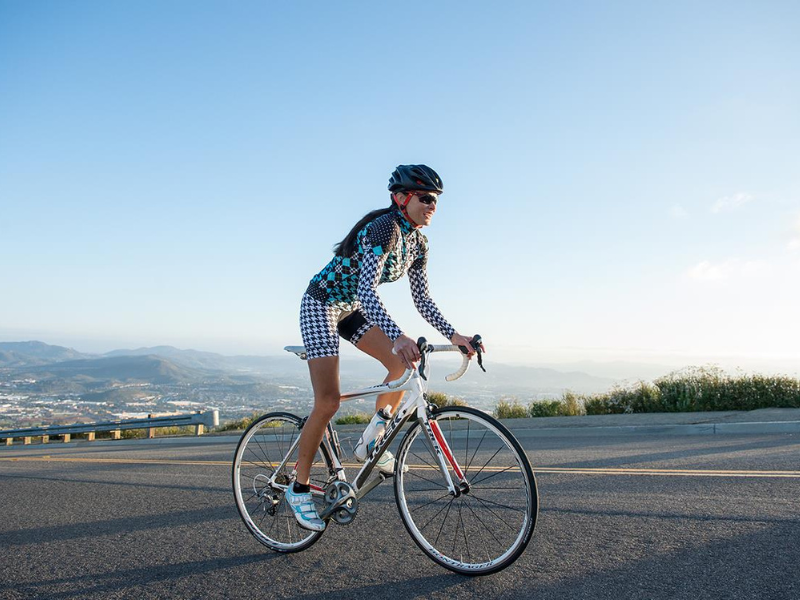Cycling is a fantastic way to improve cardiovascular fitness and build muscle strength. Engaging a full range of muscles, cycling targets the legs, glutes, core, and upper body, leading to significant muscle development and strength. The benefits of cycling for muscle growth include improved cardiovascular fitness, increased calorie burn and metabolism, and enhanced endurance and strength. Whether you choose road cycling or indoor cycling, incorporating interval training, adjusting resistance, cross-training with strength exercises, and maintaining a consistent cycling schedule can help maximize muscle growth. With proper gear, like SheBeest's high-performance cycling apparel, you'll be well on your way to achieving your muscle-building goals.
Key Takeaways: Cycling for Muscle Growth
- Cycling is a full-body workout that engages the legs, glutes, core, and upper body muscles, leading to significant muscle development and strength.
- Benefits of cycling for muscle growth include improved cardiovascular fitness, increased calorie burn and metabolism, and enhanced endurance and strength.
- Tips for maximizing muscle growth through cycling include interval training, adjusting resistance, cross-training with strength exercises, staying consistent, fueling your body right, and allowing proper rest and recovery.
Whether you're hitting the road or spinning indoors, cycling can be a key part of your strength-building regimen. Let's pedal through how cycling can propel you toward your muscle development goals and why it might just be the workout you've been looking for.
How Cycling Works Your Muscles

When you mount your bike, you're not just embarking on a journey; you're also engaging a full range of muscles. Cycling is a complex, dynamic activity that requires more than just the lower body to propel you forward. It's a full-body workout that can lead to significant muscle development and strength.
Targeting the Legs and Glutes
The legs are the primary engines of cycling, with each pedal stroke firing up a symphony of muscle activity. The thigh muscles (quadriceps and hamstrings) and calf muscles all work in harmony to push and pull the pedals. But the unsung heroes of your cycling workout are the glutes. These powerful muscles are essential for generating force, especially when climbing hills or sprinting. With regular cycling, these lower body muscles become more defined, contributing to overall muscle growth and strength.
Engaging the Core and Upper Body
While the legs and glutes are indeed the stars of the show, the core and upper body muscles play crucial supporting roles. Maintaining stability and control on the bike requires a strong core, which includes the abdominal muscles, lower back, and obliques. The upper body muscles, including the shoulders, arms, and chest, are engaged as you grip the handlebars, steer, and maintain balance. This full-body engagement also allows cycling to contribute to building a strong, toned physique beyond just the lower body.
Benefits of Cycling for Muscle Growth

Improved Cardiovascular Fitness
Cycling isn't just about building muscle; it also significantly enhances your cardiovascular fitness. As you pedal, your heart rate increases, pumping blood more efficiently throughout your body. This improved circulation helps to deliver oxygen and nutrients to your muscles more effectively, aiding in muscle repair and growth. In addition, a strong cardiovascular system can lead to increased endurance, allowing you to cycle for longer periods and at higher intensities, which can contribute to further muscle development.
Increased Calorie Burn and Metabolism
One of the key benefits of cycling is its ability to burn a lot of calories. Whether you're road cycling or hitting a spin class, cycling can help you burn anywhere from 400 to 750 calories per hour. This high calorie burn contributes to fat loss, making the muscle mass you're working so hard to build more visible.
Enhanced Endurance and Strength
Cycling is a powerhouse when it comes to building muscular endurance and strength, particularly in the leg muscles. The repetitive motion of pedaling against resistance leads to toned and strengthened leg and glute muscles. Over time, this can result in increased muscle stamina and the ability to withstand longer rides or more challenging cycling workouts.
Road Cycling vs. Indoor Cycling: Which is Better for Building Muscle?

Comparing Intensity and Resistance
When debating between road cycling and indoor cycling for muscle development, consider the intensity and resistance each option offers. Road cycling provides natural resistance and varied terrain, which can challenge your muscles in different ways. In contrast, indoor cycling allows for a controlled environment where you can adjust resistance at will, providing consistent muscle engagement. Both forms are excellent for building muscle; the choice depends on your preference and goals. Incorporating both can provide a balanced and diverse cycling routine.
The Role of Proper Cycling Apparel
Whether on the road or in a spin class, wearing the right cycling apparel can significantly improve your performance and comfort. Properly fitted, moisture-wicking gear can prevent chafing and allow for a full range of motion, so you can focus on the intensity of your ride. SheBeest offers a variety of cycling apparel designed specifically for women, promising a flattering fit that can help you ride longer and harder—key components of muscle building. Remember, the right gear can enhance your cycling experience, helping you push further and build those muscles more effectively.
Frequently Asked Questions
Can cycling help with weight loss?
Absolutely! Cycling is a fantastic way to burn calories and shed excess weight. When combined with a healthy diet and a consistent riding schedule, cycling can help you achieve a caloric deficit, which is essential for weight loss. Remember, the more muscle mass you have from regular cycling, the higher your resting metabolic rate will be, which helps you burn more calories even when you're not exercising.
How often should I cycle for muscle growth?
For optimal muscle growth, aim to cycle 3-5 times per week. Include a mix of long-distance rides for endurance and shorter, high-intensity sessions for strength. Resistance training 2-3 times per week can further enhance muscle development. Just make sure to allow for proper rest and recovery, as muscles grow during the rest periods between workouts.